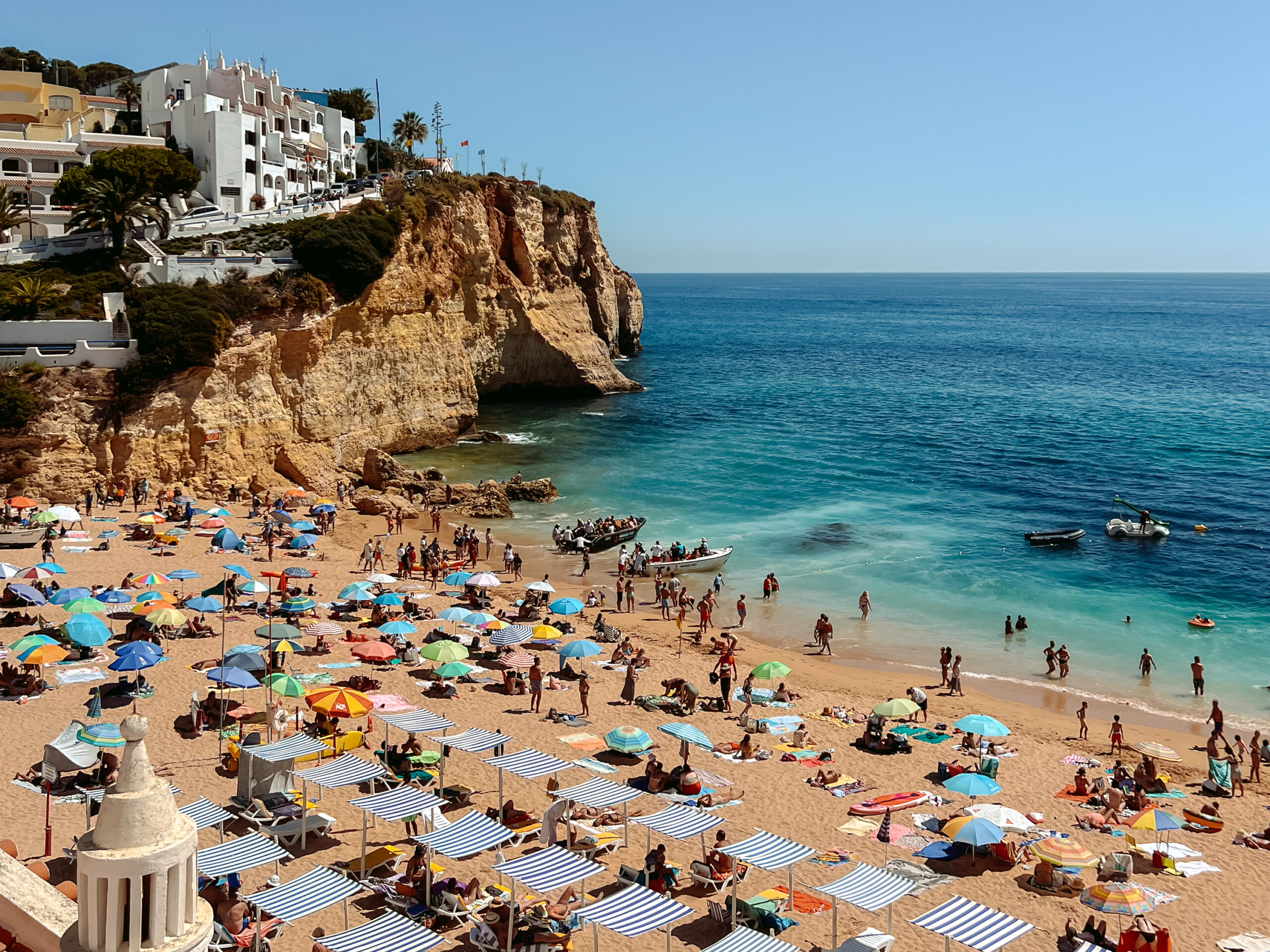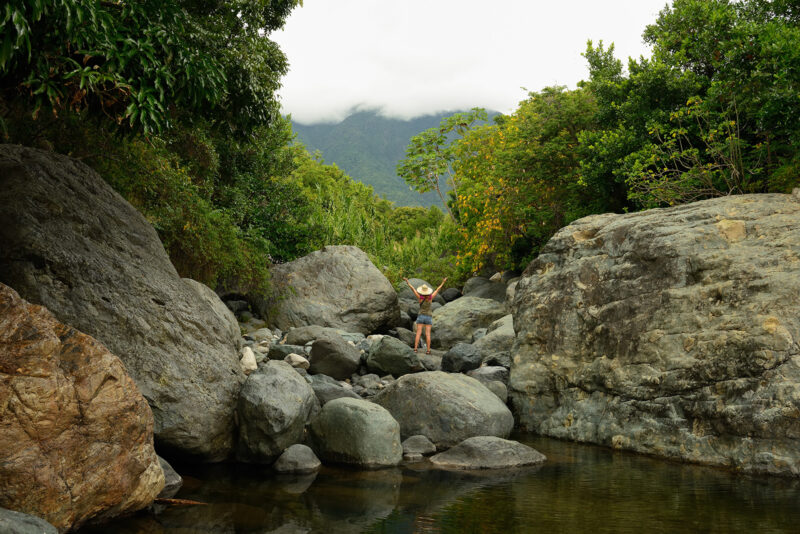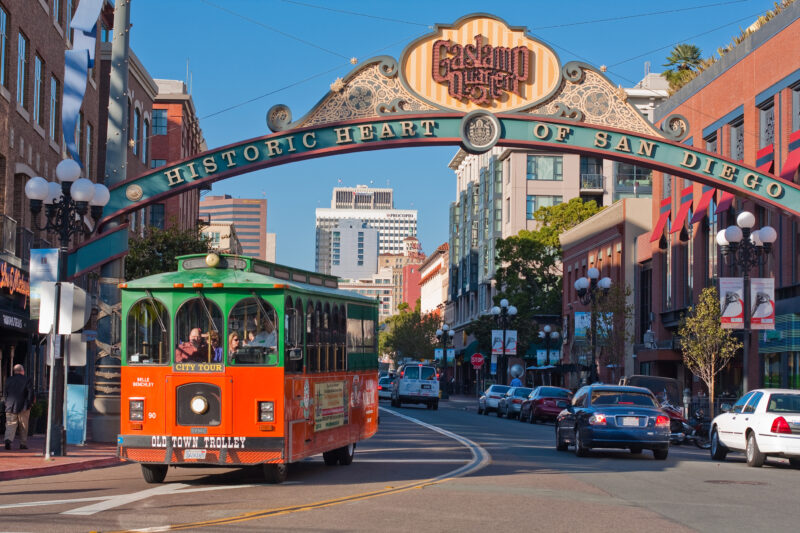To this day, the sunrise I watched from the edge of a cliff overlooking Praia da Marinha remains one of my favorite travel mornings. The cliffs glowing pink as the first light spilled across the Atlantic, the sun appearing slowly, the sheer silence that accompanies this time of day—it’s one of those unforgettable travel experiences I get to carry with me forever.
That sunrise captured the magic of the Algarve, Portugal’s sun-soaked southern coast, where honey-colored cliffs hug turquoise-colored waters, creating some of the most beautiful beaches you’ll ever see. Yet there’s so much more to explore beyond the coast, including fishing villages, castles, sea caves, cliff hikes, and more. So grab a car, kiss Lisbon goodbye, and drive down to what was once considered the edge of the world.
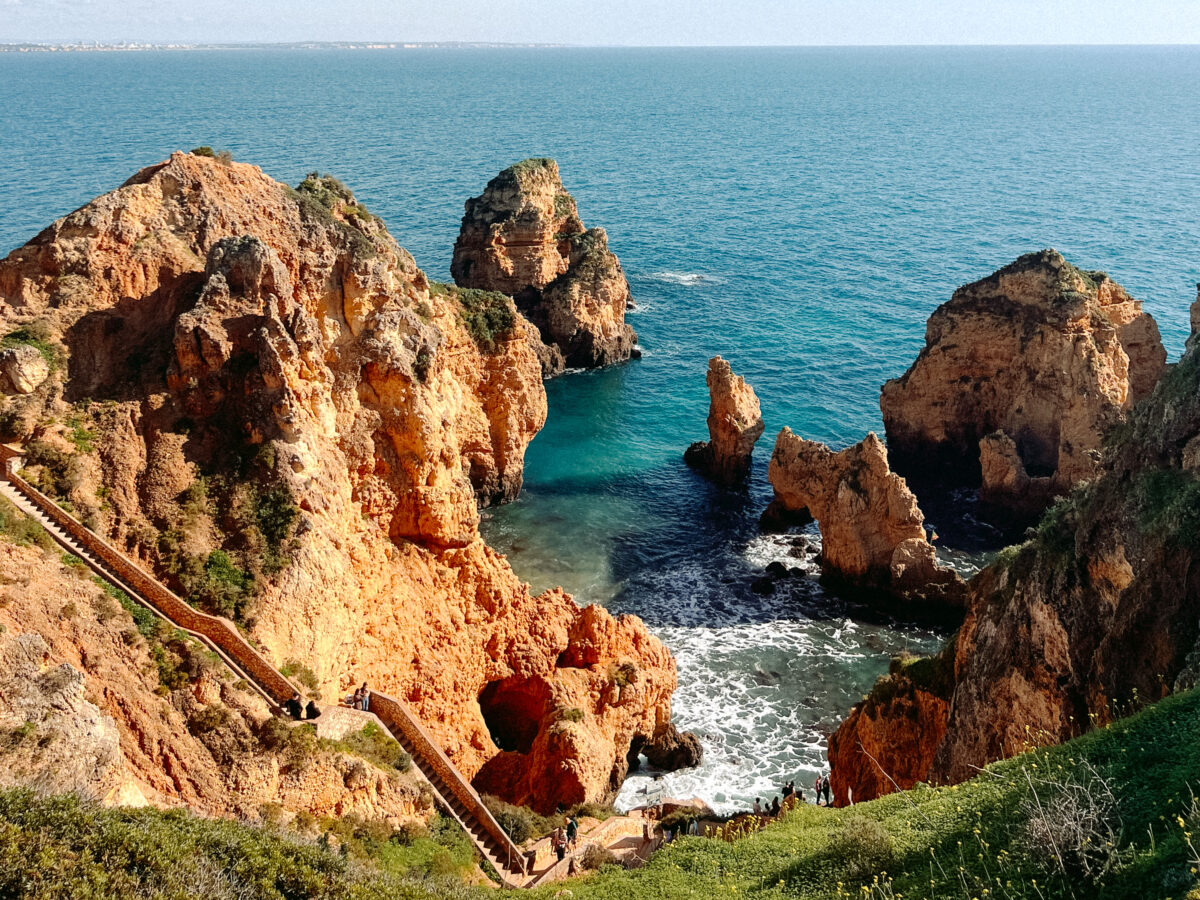
Why Visit the Algarve?
With more than 300 days of sunshine a year, the Algarve region has long been a favorite summer getaway for Europeans. Travelers come for the postcard beaches, yes, but also for the charming fishing villages, fresh seafood, and laidback pace of life. You can spend one day exploring Moorish castles or wandering historic old towns, and the next hiking cliffside trails or taking a boat into sea caves. Add in excellent food, local wines and a warm, welcoming culture, and the Algarve delivers a well-rounded beach trip that appeals to every type of traveler.
Top Beaches to Visit
I can never get enough of these cliff-hugging beaches—and once you’ve seen them, I’m sure you’ll agree.
Praia da Marinha
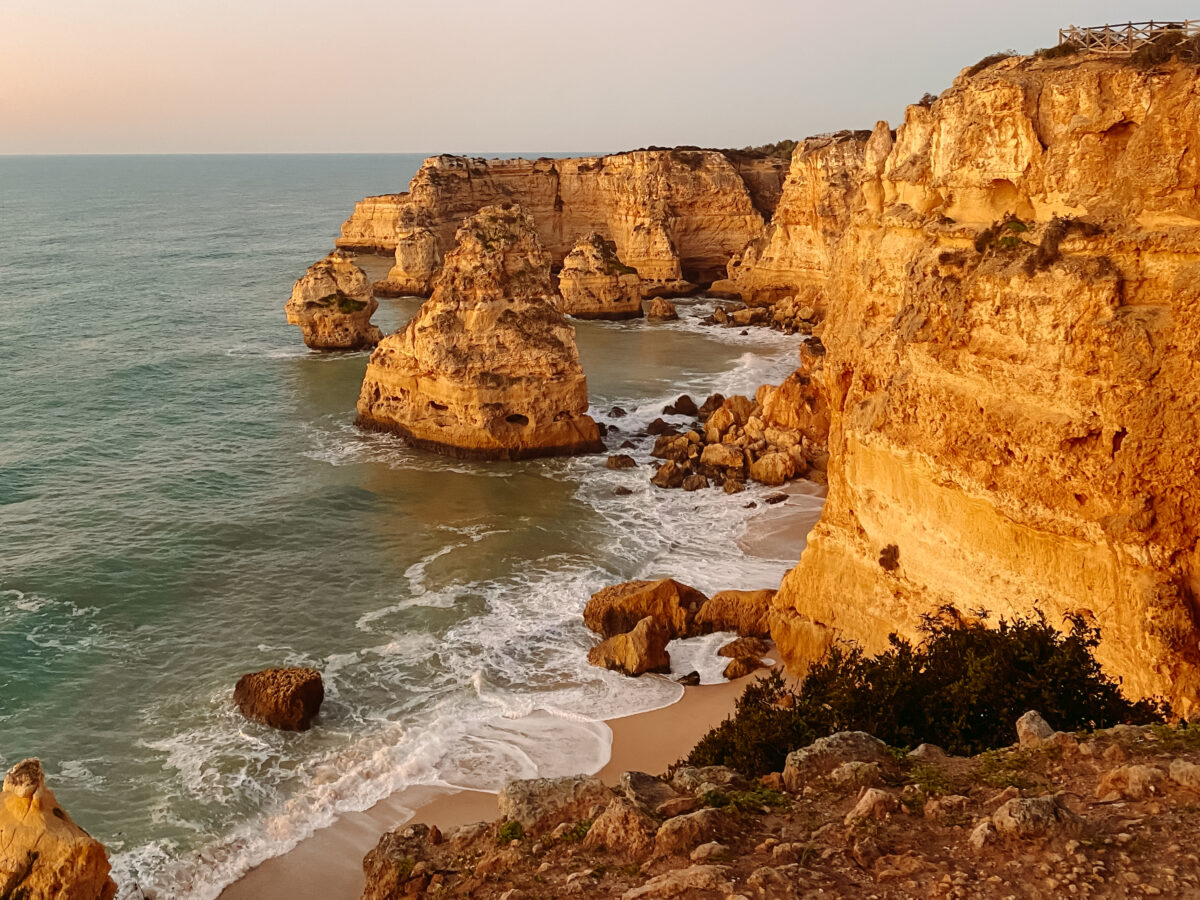
Praia da Marinha often tops lists of the world’s most beautiful beaches. From the cliff-top miradouros, the shoreline looks hand-carved—those limestone cliffs that the Algarve is known for here frames a sheltered cove of golden sand, with arches and sea stacks sculpted by centuries of wind and waves. The turquoise water contrasts beautifully with the honey-colored rock, creating a scene so striking it feels like a painting.
Reaching the beach requires descending a steep staircase, but the effort is rewarded the moment you step onto the sand. The scale of the cliffs begs for your full attention, and at low tide, you can wander into small coves carved by the sea. Meanwhile, high tide brings a more intimate feeling, with the beach tucked neatly into its cliffside cradle.
Praia do Camilo
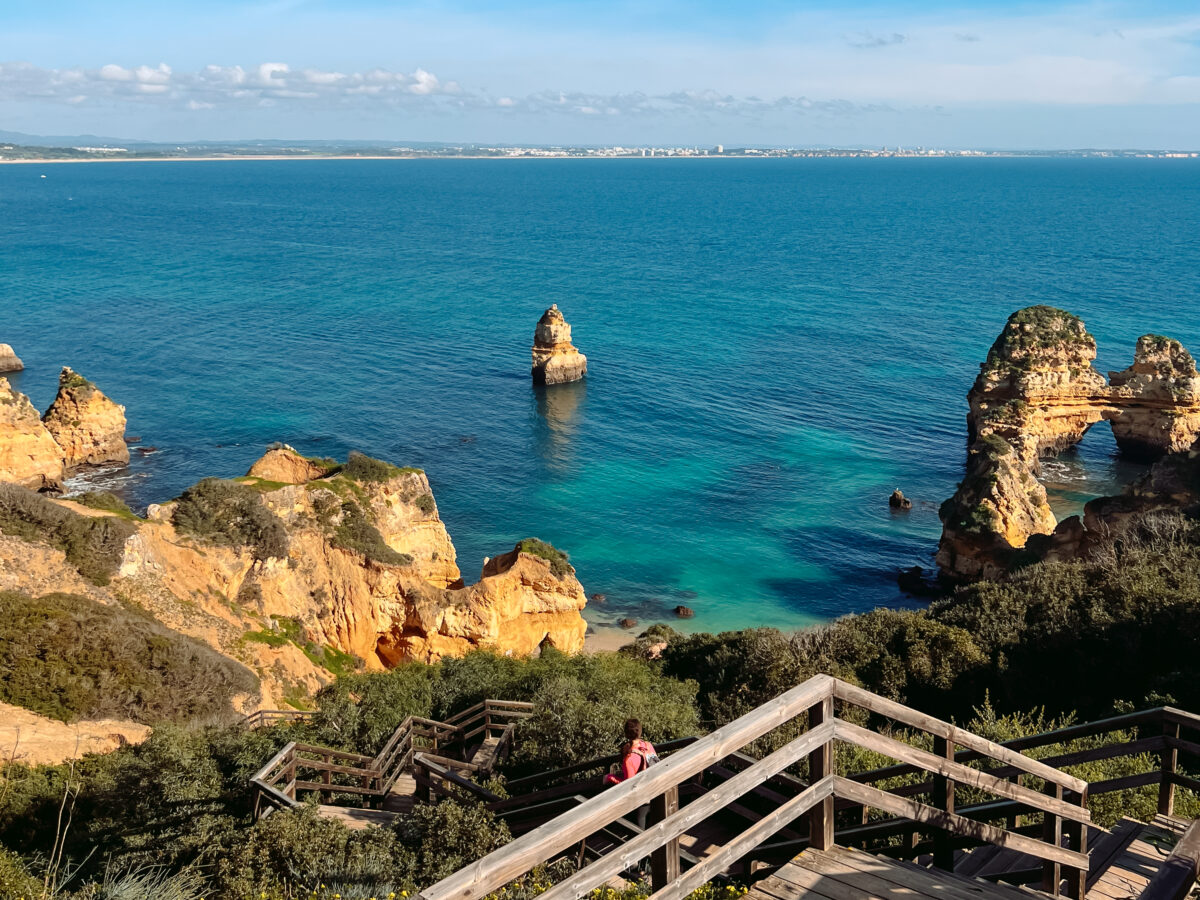
Praia do Camilo is made up of two coves stitched together by a hand-cut tunnel. To reach it, you descend a long wooden staircase of at least 200 steps, zigzagging dramatically down the cliffs. The cove itself is small and sheltered, with calm, crystal-clear water that’s perfect for swimming and snorkeling. Colorful fish dart around the rocks, and when the tide is low you can walk through a carved tunnel to a second, hidden cove. Because of its limited size, the beach fills up quickly in summer, so it’s best to arrive early in the morning or later in the afternoon for a quieter experience.
Praia de Dona Ana
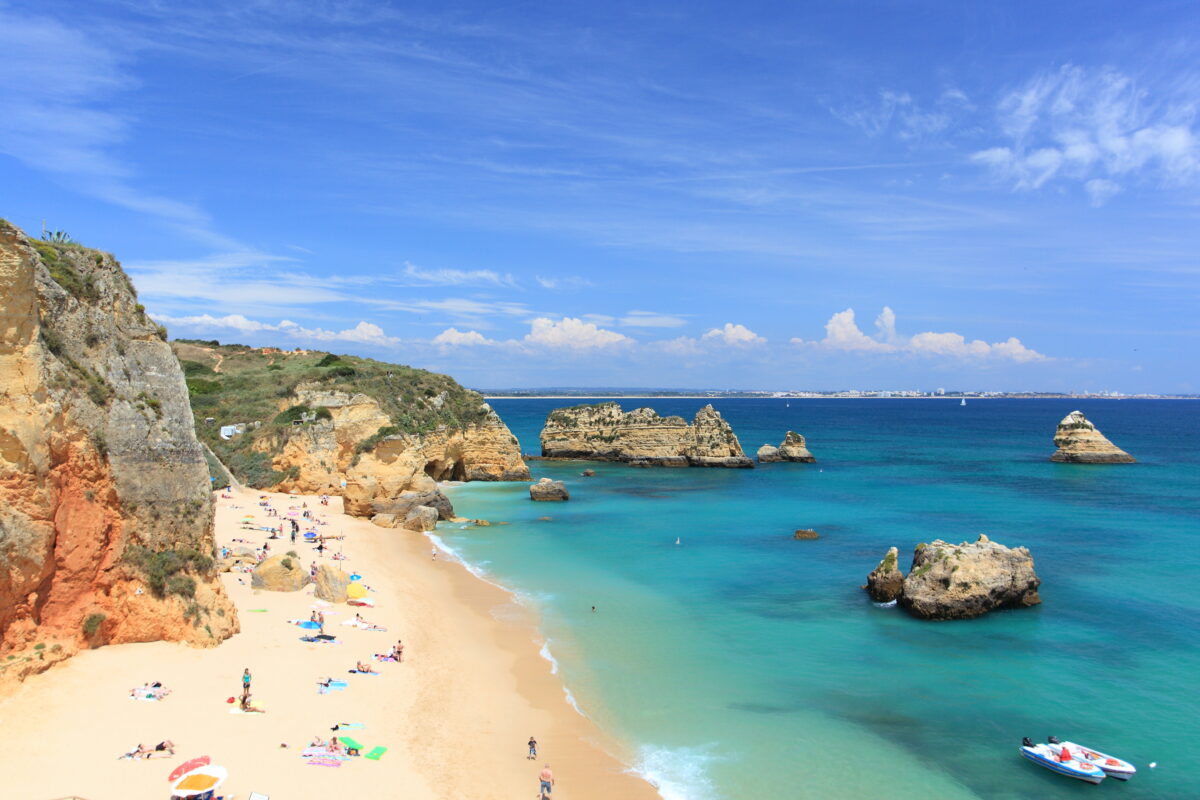
One of the Algarve’s most photographed beaches, Praia de Dona Ana is also framed by dramatic cliffs that glow golden in the afternoon light. Just a short walk from central Lagos, it’s one of the most accessible beaches in the region. The beach itself is wide and sandy, with calm, clear waters the region is known for. Rock formations rise just offshore, creating natural breaks that keep the water relatively gentle. At low tide, you can even wade around to explore smaller coves nearby.
Praia da Falésia
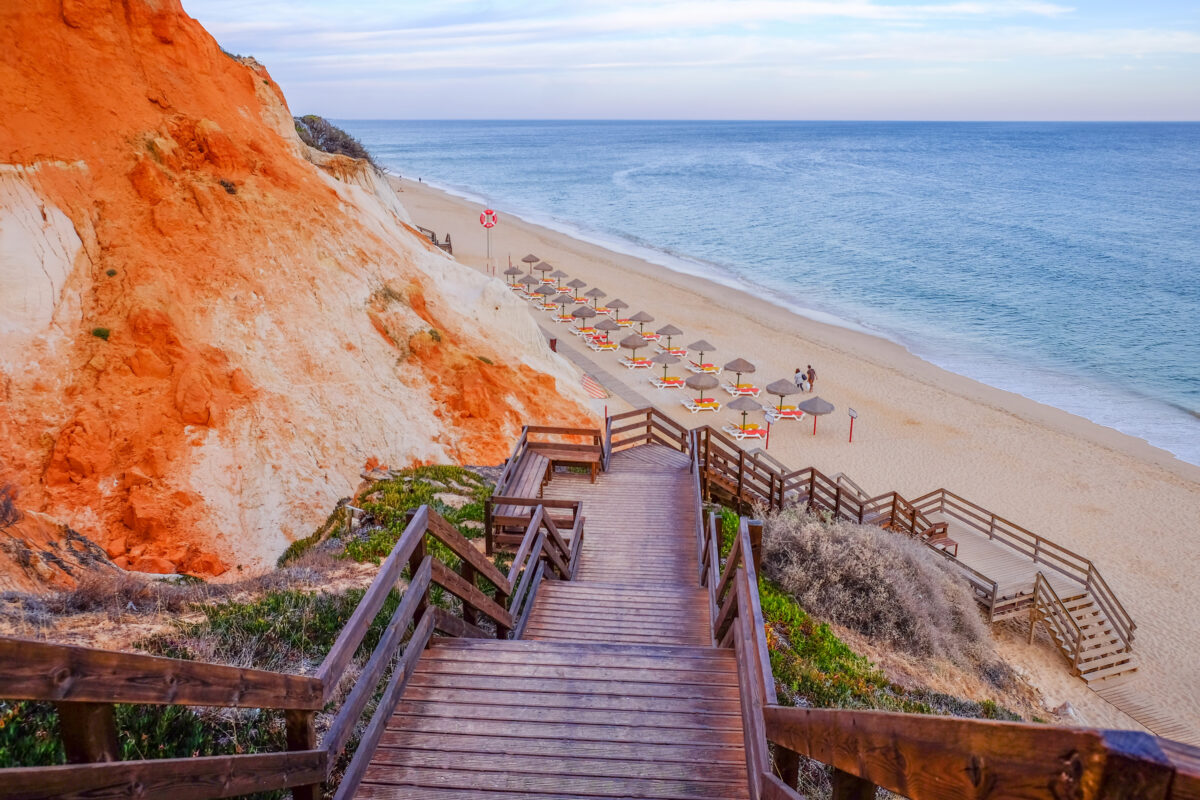
Praia da Falésia is unlike any other beach in the Algarve. Stretching for nearly six kilometers between Albufeira and Vilamoura, its defining feature is the wall of rust-red, orange, and white cliffs behind the sand. The beach itself is long, wide, and sandy—ideal for anyone who prefers space to spread out or long seaside walks. Even in peak summer, you can usually find a quiet patch away from the busiest entrances, especially at low tide when the beach feels even more expansive.
Praia de Carvoeiro
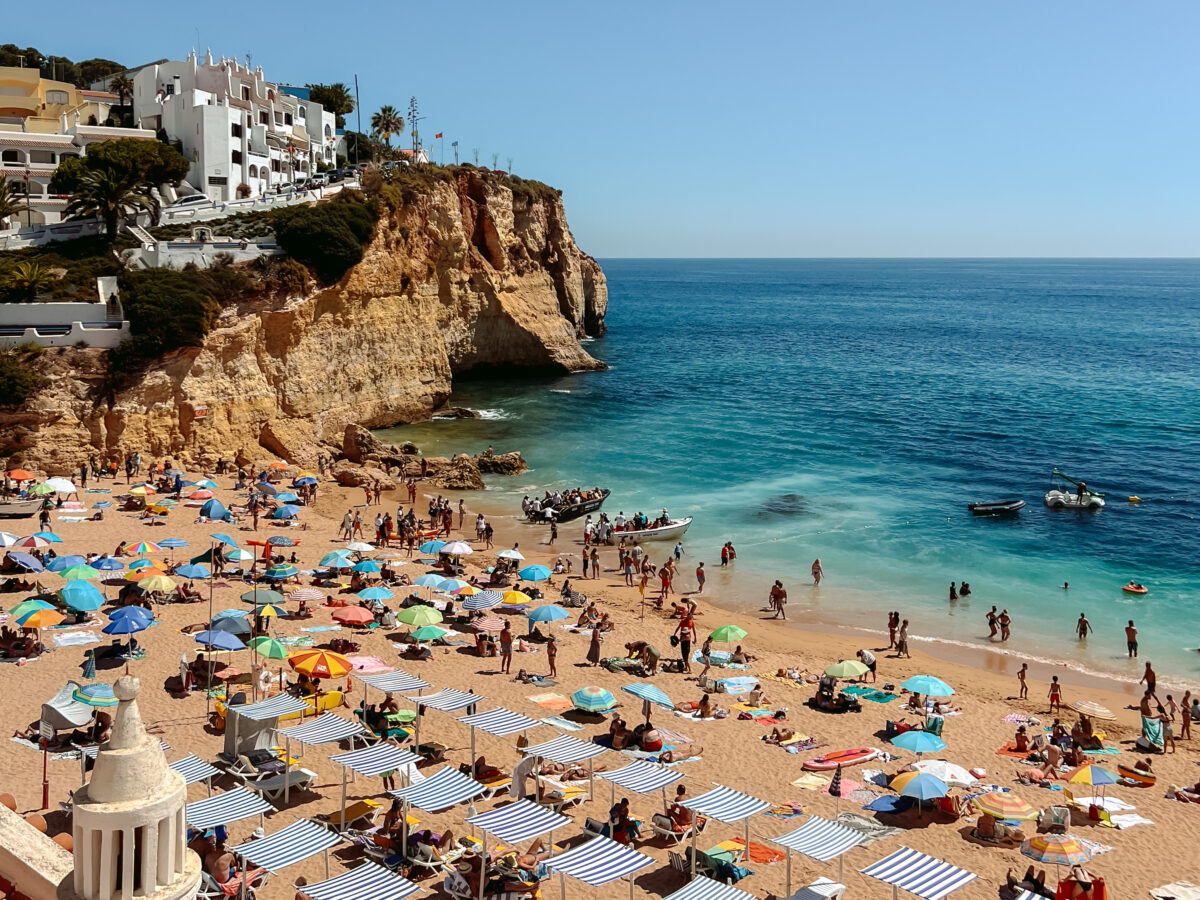
Set at the heart of a former fishing village, Praia de Carvoeiro is a postcard scene marked by the whitewashed houses hovering on the cliffs above. The beach is small and sheltered, making it great for swimming, while cafés and restaurants line the promenade just steps from the sand. From here, you can join boat tours to nearby caves or set off on the cliff-top boardwalk for sweeping coastal views.
Top Experiences Beyond the Beach
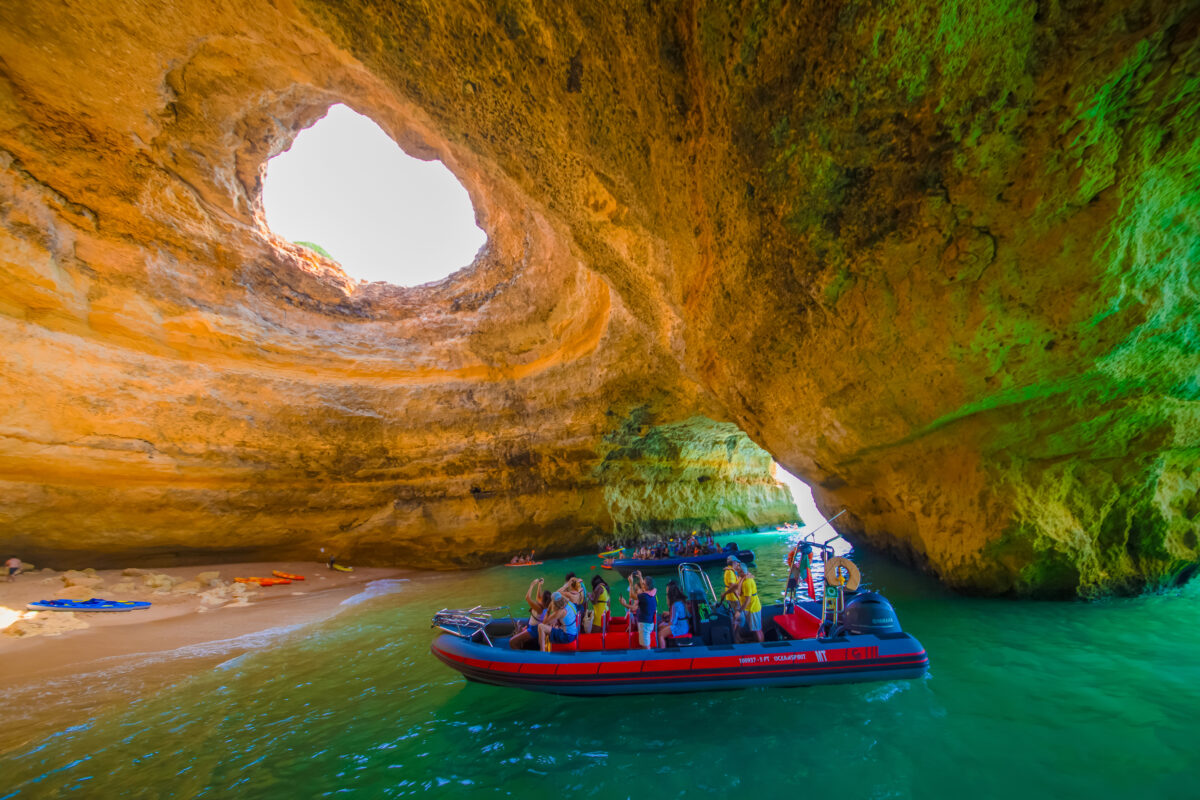
Beyond the beach, you can hike, visit caves, and shop around charming historic towns.
Hike the Seven Hanging Valleys Trail: Widely considered one of Portugal’s most beautiful coastal walks, this 11-kilometer trail winds along towering cliffs, hidden coves, and viewpoints over Praia da Marinha and Benagil. Plan for 4 to 6 hours round-trip at a relaxed pace.
Venture into the Benagil Caves: The Algarve’s most famous sea cave can only be reached from the water—by kayak, paddleboard or boat. Inside, sunlight streams through a natural skylight, illuminating the rocky walls around you.
Faro’s Old Town: Step into the Algarve’s capital and wander cobblestoned streets framed by 18th-century architecture and charming plazas. It’s a quieter, more cultural side of the region.
Tile Painting Workshop in Silves: A short drive inland, Silves is crowned by one of the main and most beautiful Muslim fortifications in Portugal. Spend an afternoon learning the art of traditional azulejo tile painting, then linger in this historic town with its orange-tree-lined streets and terracotta rooftops.
Dolphin-watching Cruise: The Algarve coast is home to pods of dolphins that can often be spotted just offshore. Boat trips depart from towns like Lagos and Albufeira, hoping to catch a glimpse of them along with beautiful views of the beaches from the water.
Surf in Sagres: On the Algarve’s wild western tip, Sagres is a surfer’s paradise. Consistent swells attract surfers from around the world, whether you’re a seasoned surfer or a beginner ready for a lesson.
Best Towns to Base Yourself
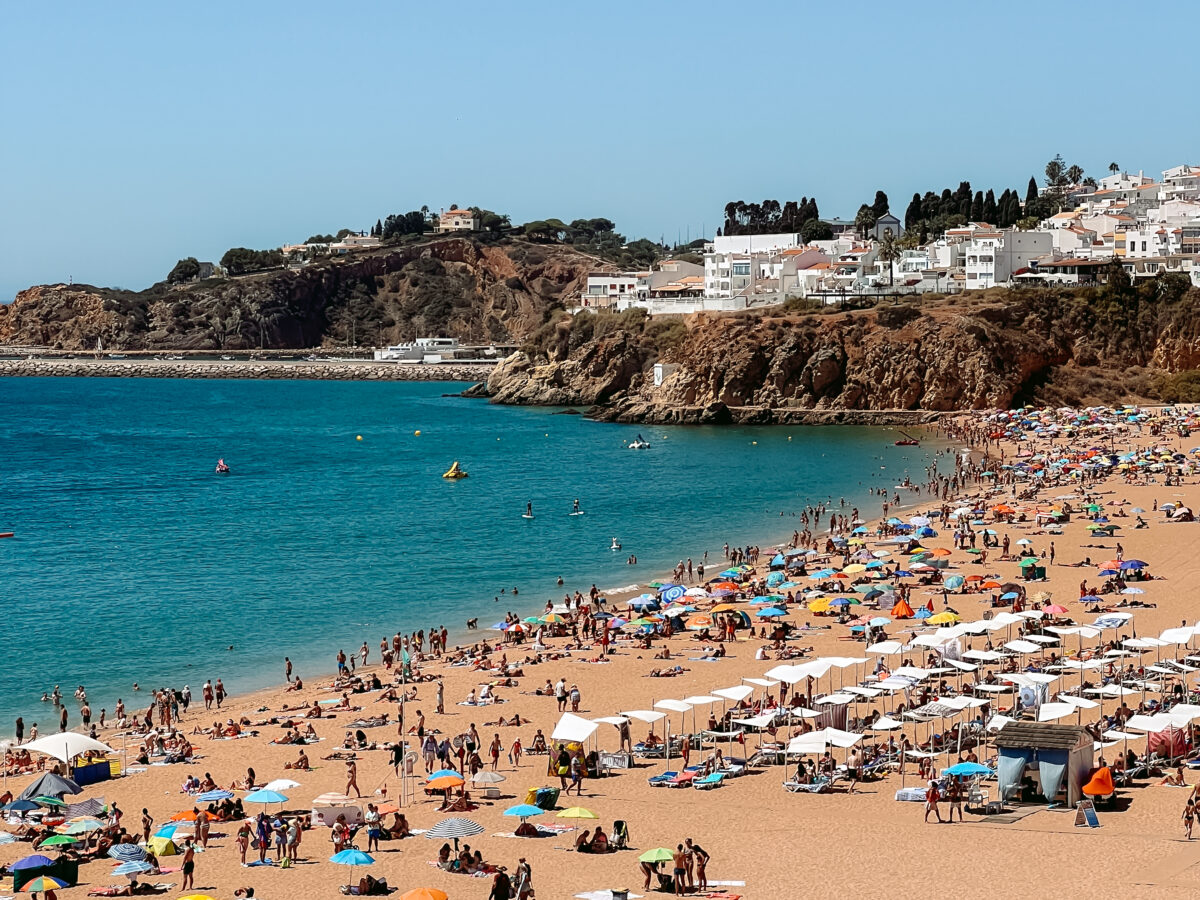
Lagos (ideal for first-timers): A favorite among travelers for its lively marina, historic center, and easy access to top beaches like Praia do Camilo and Dona Ana. Lagos balances charm and convenience, making it a great introduction to the Algarve.
Faro (city life + airport): Many see Faro only as the entry point to the Algarve, but the region’s capital has plenty to offer. Its Old Town is a maze of cobbled streets and striking architecture, such as the Arco da Vila. Between excellent restaurants, nearby islands like Ilha do Farol, and boat cruises through the Ria Formosa lagoon, Faro is worth more than just a passing glance.
Albufeira (central + nightlife): Known for its bustling nightlife and central location, Albufeira makes a practical base for those who want a bit of everything—beaches, restaurants, shops, and late-night outings.
Sagres (surf haven): On the Algarve’s western tip, Sagres has a rugged, windswept beauty and some of the region’s best surf. It’s laidback, outdoors and ideal for those who prefer waves to beach clubs.
Carvoeiro (good restaurants + scenic base): Once a fishing village, Carvoeiro now charms visitors with its dramatic cliff-backed beach, coastal walking paths, and great restaurants. It’s a small-town feel, paired with stunning scenery.
What to Eat & Drink?
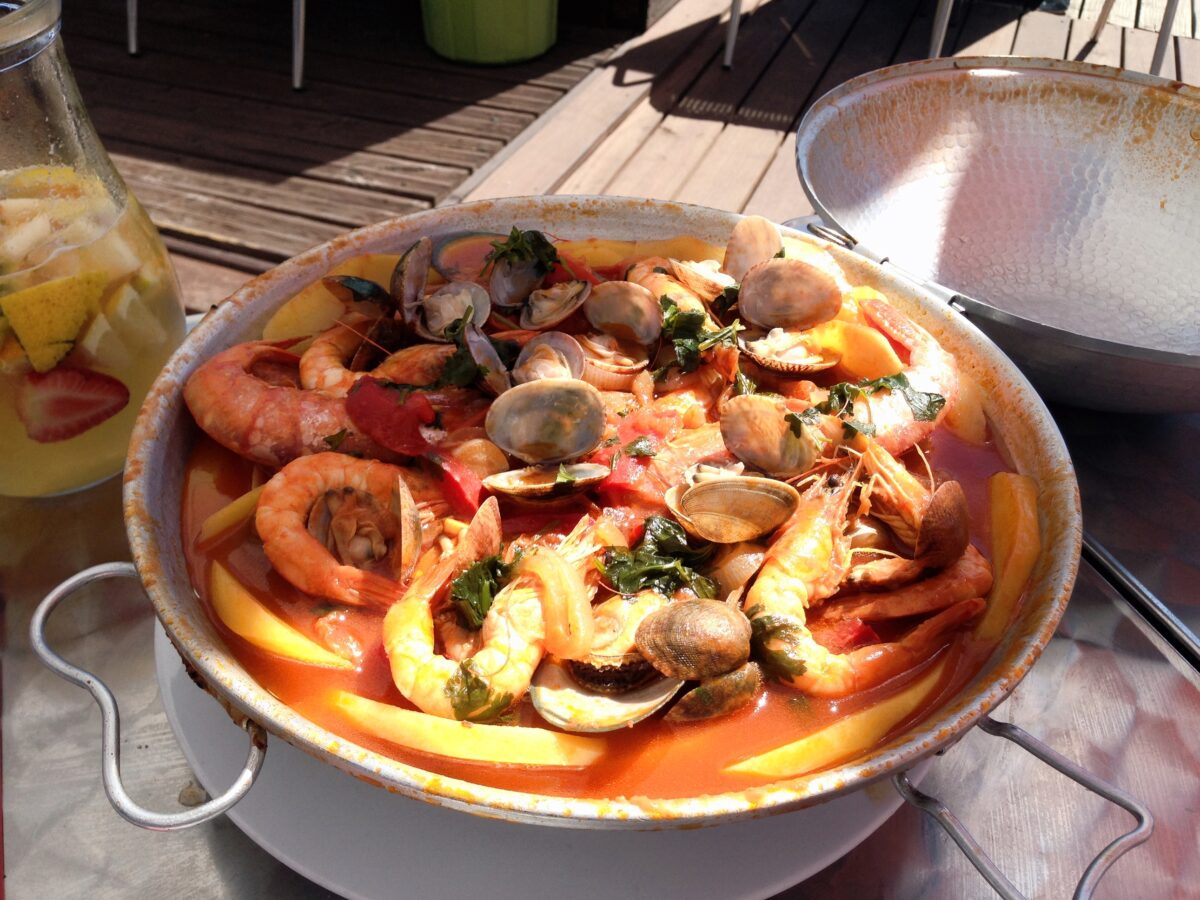
The Algarve’s cuisine is deeply tied to the sea, with dishes that celebrate the day’s catch alongside farm-fresh produce from the surrounding inland areas. These are the specialties you won’t want to miss:
Cataplana de marisco: A deliciously rich seafood stew cooked in a clam-shaped copper pot, often filled with clams, prawns, and fish simmered with tomatoes, peppers and herbs.
Grilled sardines: Served fresh off the grill, usually with a side of potatoes and salad—best enjoyed at a seaside taverna in summer.
Amêijoas à Bulhão Pato: Clams cooked with garlic, olive oil, and cilantro, perfect with crusty bread to soak up the sauce.
Piri-piri chicken: Though famous across Portugal, the Algarve claims its own fiery version, grilled to perfection and served with fries or salad.
Regional sweets: Try Dom Rodrigos (egg-yolk and almond treats wrapped in colorful foil) or fig and almond cakes for a taste of local tradition.
Wines & spirits: The Algarve produces surprisingly good wines. And don’t leave without sampling a glass of medronho, a strong fruit brandy and local classic.
When to Go
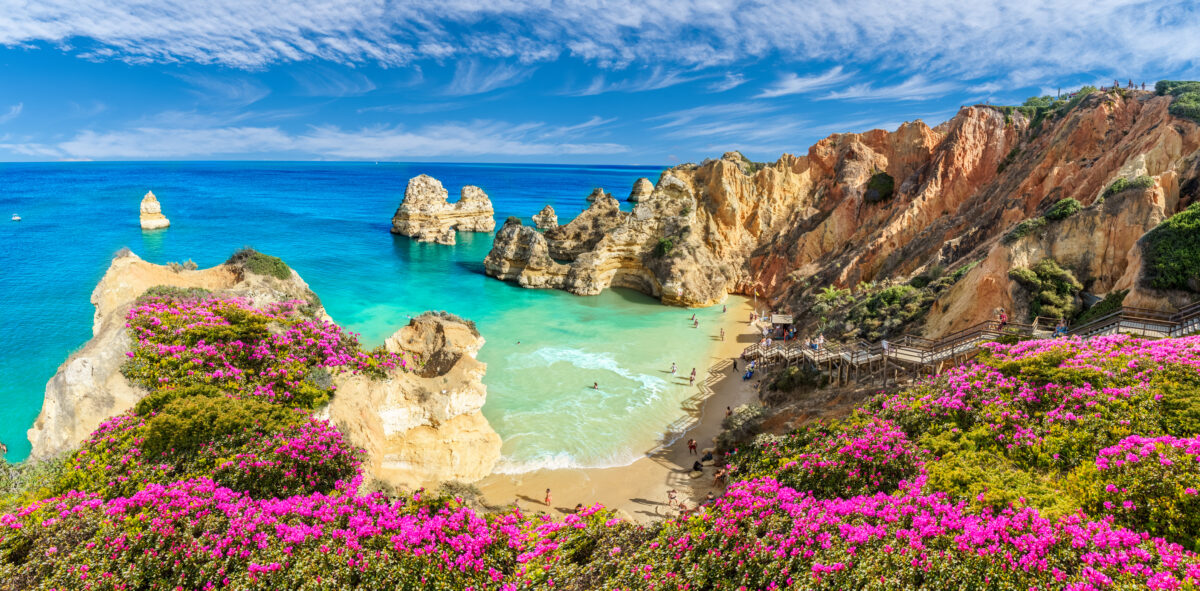
The Algarve is a year-round destination, but each season offers a different experience. Peak season is from June to August, when the days are piping hot and the beaches packed. In the Spring (April–May) and Fall (September–October), the weather is still warm but there are fewer tourists around, making these the best months for most travelers. Hiking trails like the Seven Hanging Valleys are especially beautiful in spring, when wildflowers bloom.
How to Get Around
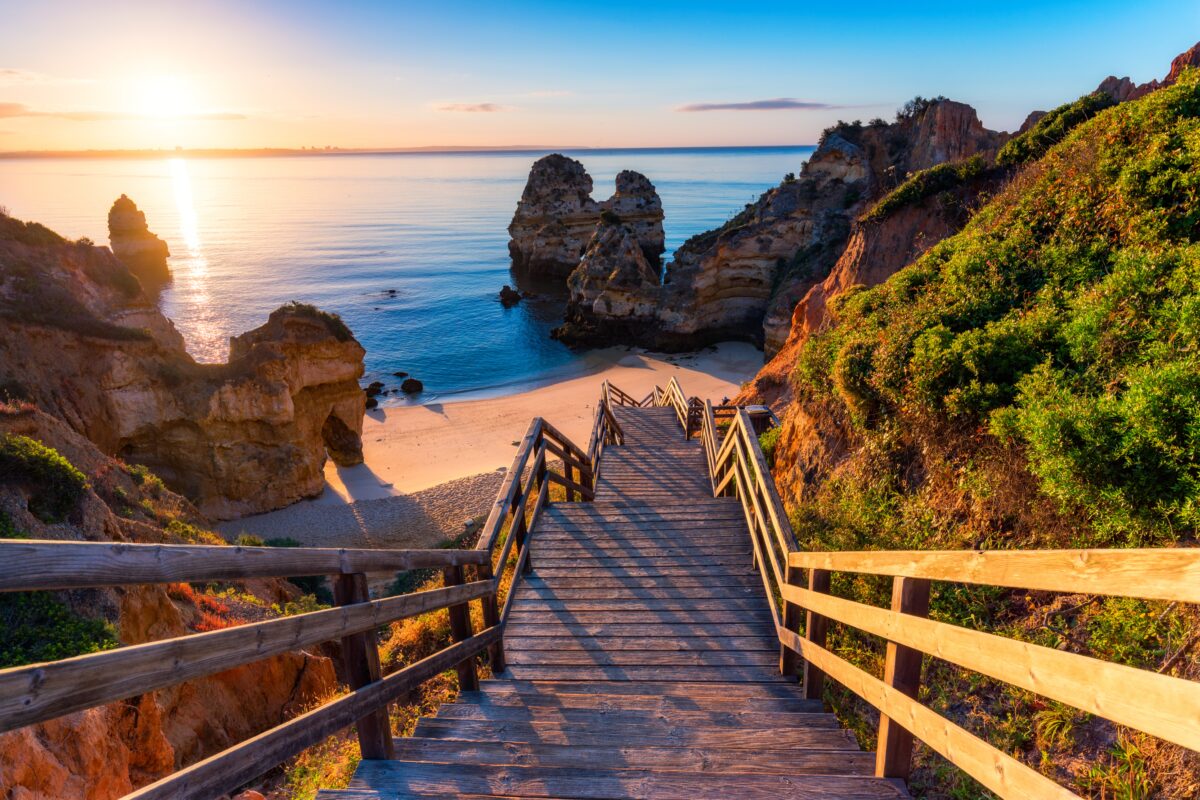
The easiest way to get around the Algarve region is by car, since many of its most beautiful beaches are tucked away from public transport routes. Trains and buses connect the main towns like Faro, Lagos, and Tavira, but they won’t get you to smaller coves or villages.
Ride-hailing apps like Uber can work for short trips, while ferries and boat tours are the way to reach offshore islands or explore sea caves. In the towns themselves—especially Lagos, Tavira, and Faro—you can easily get around on foot or by bike.

